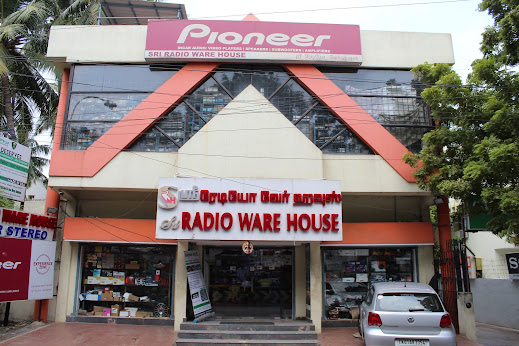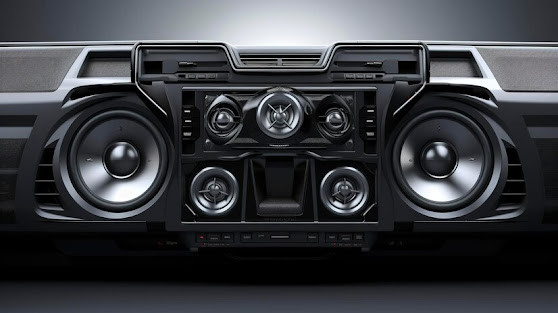Graphene Coating vs. Ceramic Coating: A Comprehensive Comparison
In the realm of automotive detailing, the quest for the perfect protective coating has led to the rise of graphene coating and ceramic coating as two prominent contenders. These advanced coatings offer exceptional durability, resistance to environmental hazards, and aesthetic enhancement, making them highly sought-after choices among car enthusiasts. However, understanding the nuances between graphene coating and ceramic coating is crucial for making an informed decision. Let's delve deeper into each coating's composition, properties, application process, and advantages to provide a comprehensive comparison.
Graphene Coating:
Graphene, hailed as a revolutionary material, is a single layer of carbon atoms arranged in a two-dimensional honeycomb lattice. Its exceptional properties, including high strength, conductivity, and flexibility, have spurred intense research across various industries, including automotive.
Composition:
Graphene coatings typically consist of multiple layers of graphene nanoparticles suspended in a liquid carrier solution. These nanoparticles form a robust, impermeable barrier when applied to a surface, providing outstanding protection against scratches, UV rays, and chemical contaminants.
Properties:
1. Superior Hardness:
Graphene coatings exhibit remarkable hardness, surpassing that of traditional ceramic coatings. This hardness translates into enhanced scratch resistance, ensuring long-lasting protection for the vehicle's paintwork.
2. Heat Dissipation:
Graphene's excellent thermal conductivity enables effective heat dissipation, which can be advantageous in regions with high ambient temperatures. This property helps mitigate heat-induced damage to the vehicle's exterior.
3. Hydrophobicity:
Graphene coatings boast exceptional hydrophobic properties, repelling water and preventing the formation of water spots. This hydrophobic barrier also facilitates easy cleaning and maintenance, contributing to a glossy, showroom-like finish.
Application Process:
The application of graphene coatings typically involves meticulous surface preparation, including thorough cleaning and decontamination to ensure optimal bonding. The coating is then applied using specialized applicators, followed by a curing period to allow the graphene nanoparticles to bond with the surface effectively.
Advantages:
- Enhanced Scratch Resistance: Graphene coatings offer superior scratch resistance compared to traditional ceramic coatings, providing enhanced protection against surface abrasions.
- Improved Thermal Management: The excellent thermal conductivity of graphene coatings helps dissipate heat effectively, minimizing the risk of heat-related damage to the vehicle's paintwork.
- Exceptional Hydrophobicity: Graphene coatings create a durable hydrophobic barrier, repelling water and making maintenance easier while preserving the paint's gloss and clarity.
Ceramic Coating:
Ceramic coatings, also known as nano-ceramic coatings or glass coatings, have gained widespread popularity in the automotive industry for their ability to provide long-lasting protection and aesthetic enhancement to vehicle surfaces.
Composition:
Ceramic coatings are primarily composed of silicon dioxide (SiO2) or titanium dioxide (TiO2) nanoparticles suspended in a solvent-based solution or emulsion. These nanoparticles form a transparent, durable layer when applied to the vehicle's paint, glass, or other surfaces.
Properties:
1. Hardness and Durability:
Ceramic coatings exhibit exceptional hardness and durability, forming a strong bond with the substrate and providing long-lasting protection against scratches, swirl marks, and environmental contaminants.
2. Hydrophobicity:
Ceramic coatings create a hydrophobic surface, causing water to bead and roll off easily. This property not only enhances the vehicle's appearance but also facilitates easier cleaning and maintenance.
3. Chemical Resistance:
Ceramic coatings offer excellent resistance to chemical contaminants such as bird droppings, tree sap, and road tar, helping to prevent etching and staining of the paintwork.
Application Process:
The application of ceramic coatings involves thorough surface preparation, including cleaning, decontamination, and sometimes paint correction to remove imperfections. The coating is then applied using specialized applicators or sprayers, followed by a curing period to allow for proper bonding and hardening of the Coating.
Advantages:
- Superior Protection: Ceramic coatings provide a durable, sacrificial layer of protection that shields the vehicle's surfaces from a wide range of environmental hazards, including UV rays, oxidation, and chemical contaminants.
- Enhanced Aesthetics: Ceramic coatings enhance the gloss and clarity of the vehicle's paint, giving it a deep, reflective shine that enhances its overall appearance.
- Longevity: When properly applied and maintained, ceramic coatings can last for several years, providing long-term protection and value for car owners.
Comparison:
While both graphene coating and ceramic coating offer exceptional protection and aesthetic enhancement for vehicle surfaces, several key differences set them apart:
1. Hardness and Scratch Resistance:
Graphene coatings typically offer superior scratch resistance due to the inherent hardness of graphene nanoparticles. However, ceramic coatings still provide excellent scratch resistance and durability.
2. Thermal Management:
Graphene coatings have the advantage of superior thermal conductivity, which can be beneficial in high-temperature environments. Ceramic coatings also offer some degree of heat resistance but may not dissipate heat as effectively as graphene.
3. Hydrophobicity and Ease of Maintenance:
Both coatings exhibit excellent hydrophobic properties, repelling water and making maintenance easier. However, the specific formulation and application process can influence the degree of hydrophobicity and longevity of the effect.
4. Application Process and Cost:
The application process for both coatings involves thorough surface preparation and meticulous application techniques. Graphene coatings may require specific expertise due to their relatively new technology, potentially affecting the overall cost of application.
Conclusion
In conclusion, both graphene coating and ceramic coating represent advanced solutions for protecting and enhancing the appearance of vehicle surfaces. While graphene coatings offer certain advantages in terms of hardness and thermal management, ceramic coatings remain a highly popular choice due to their proven durability, longevity, and aesthetic benefits. Ultimately, the choice between graphene coating and ceramic coating depends on factors such as specific performance requirements, budget considerations, and personal preferences.
.jpg)



Comments
Post a Comment